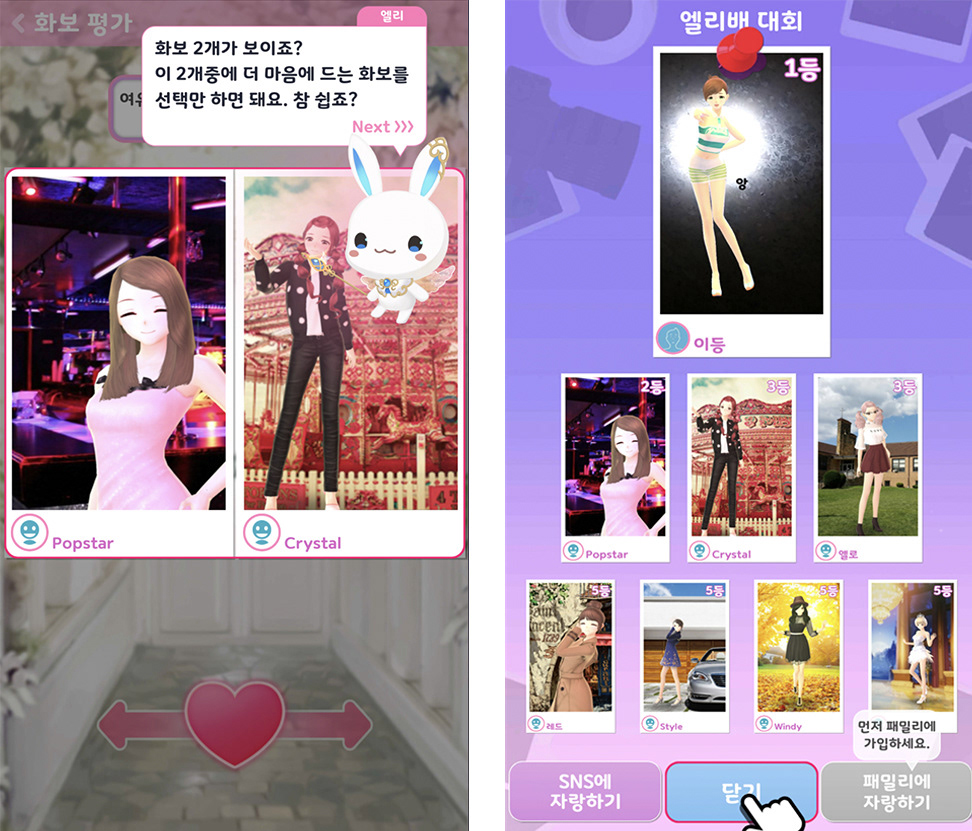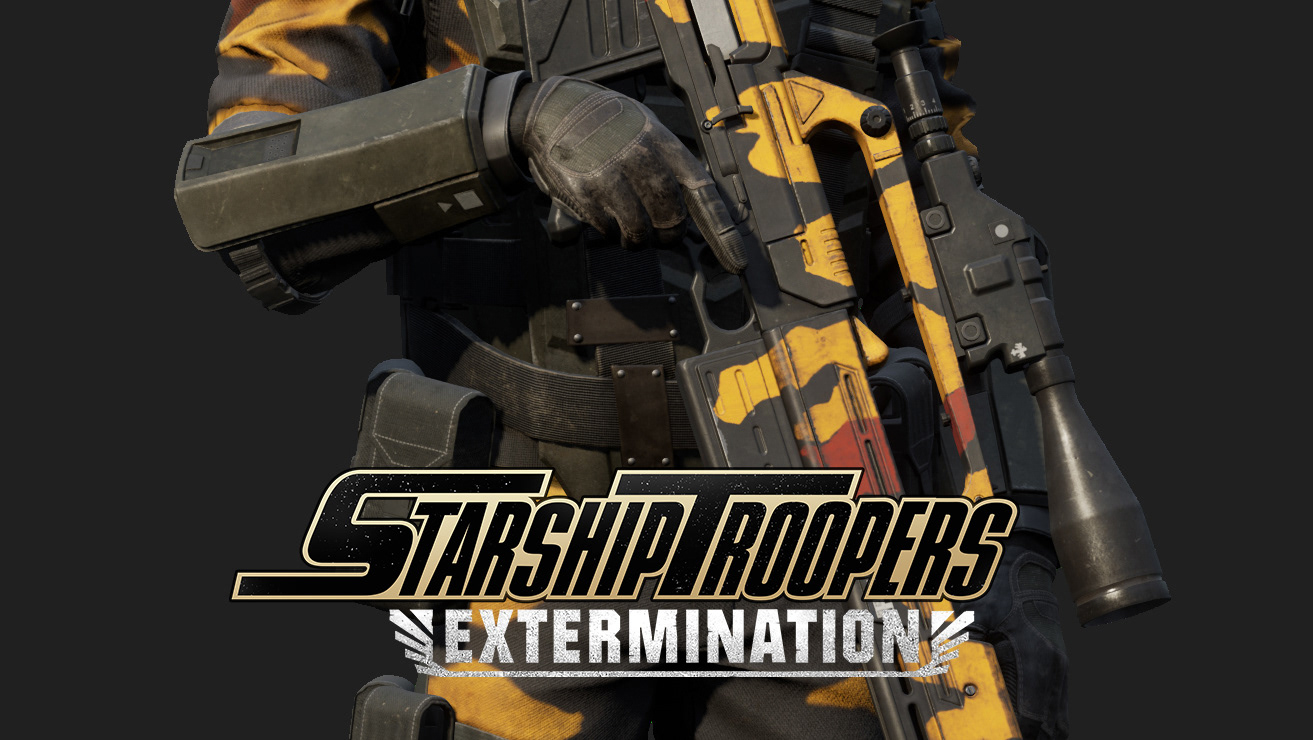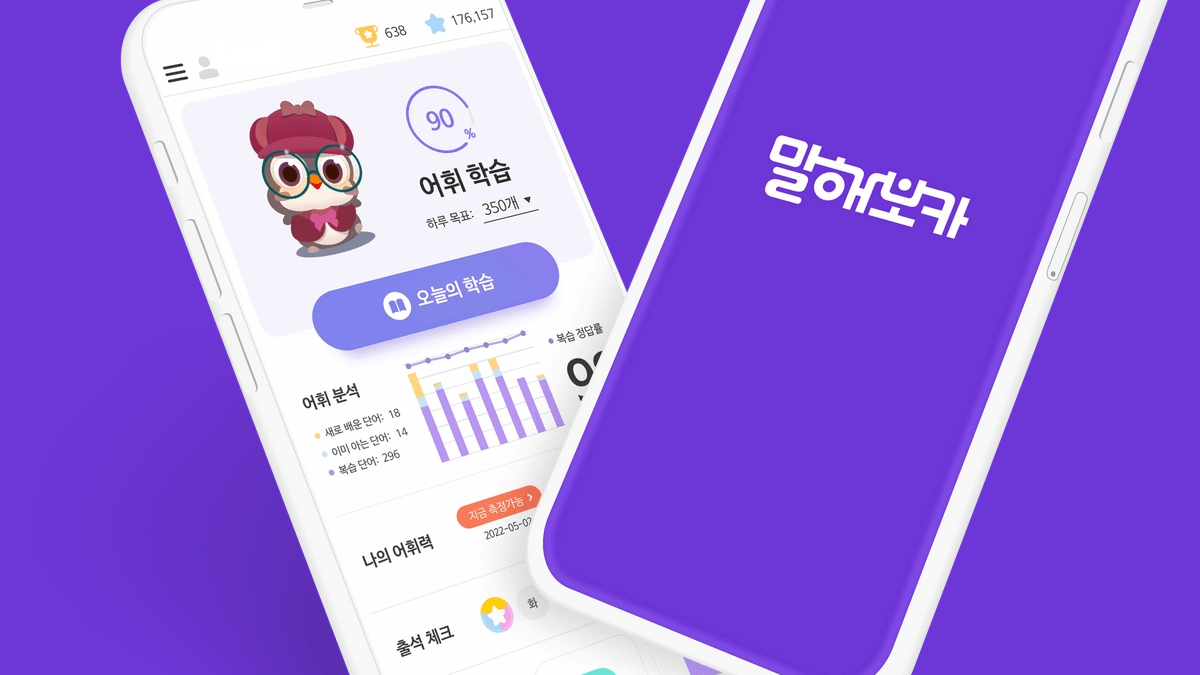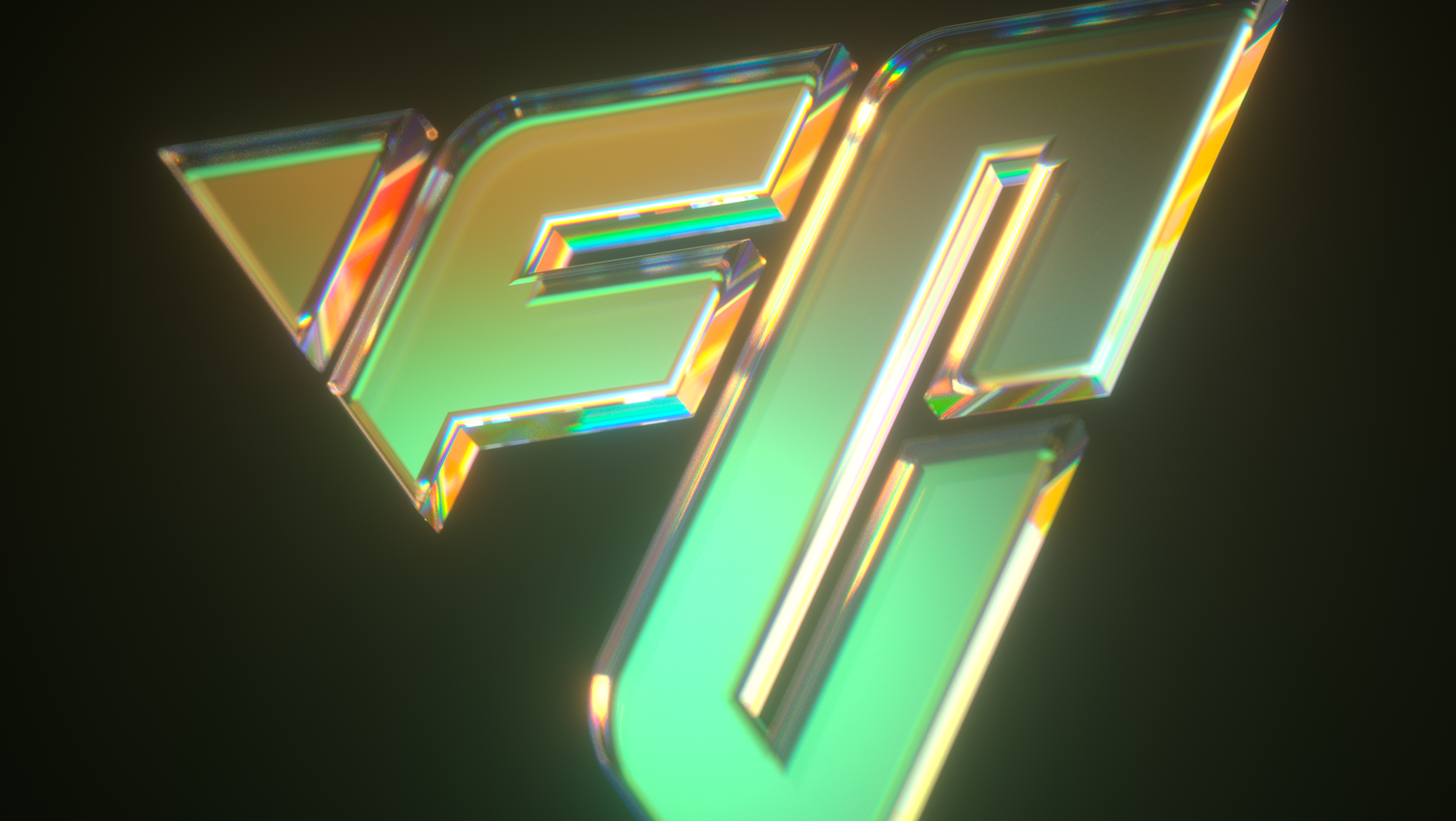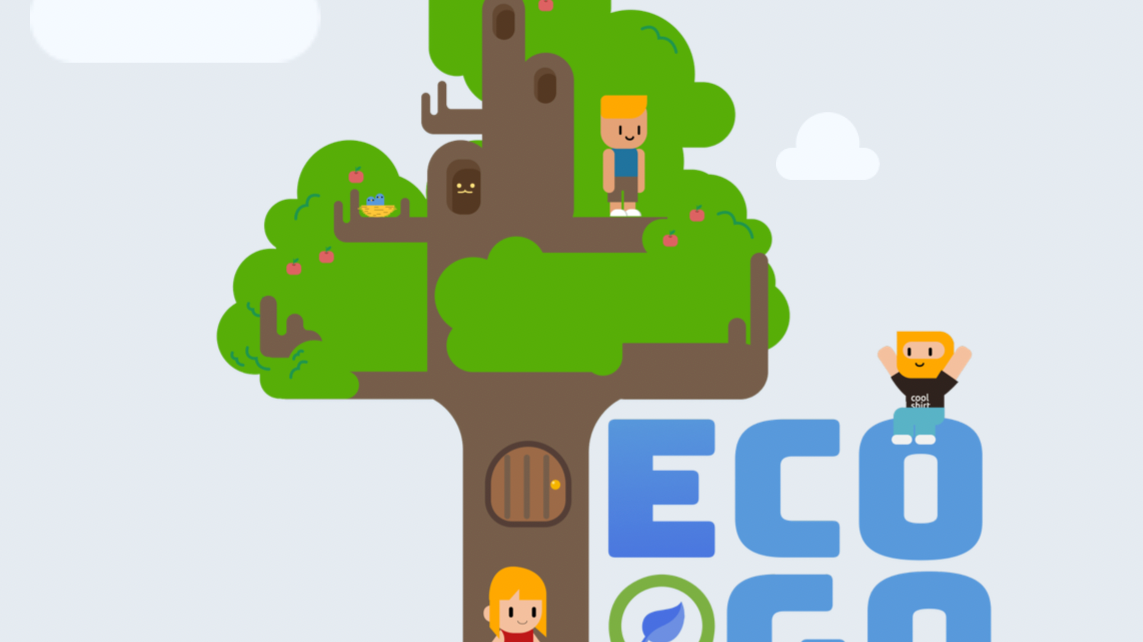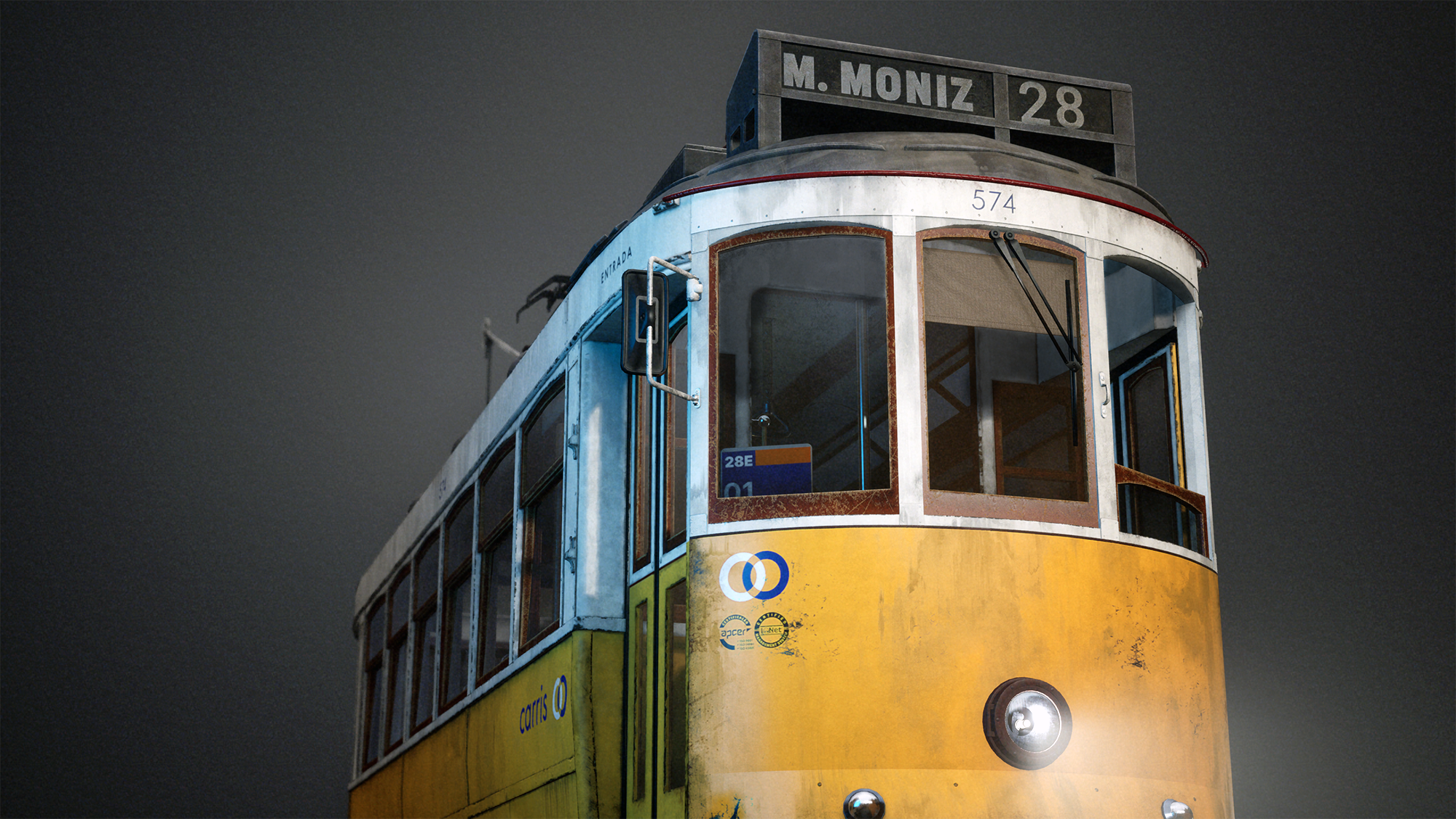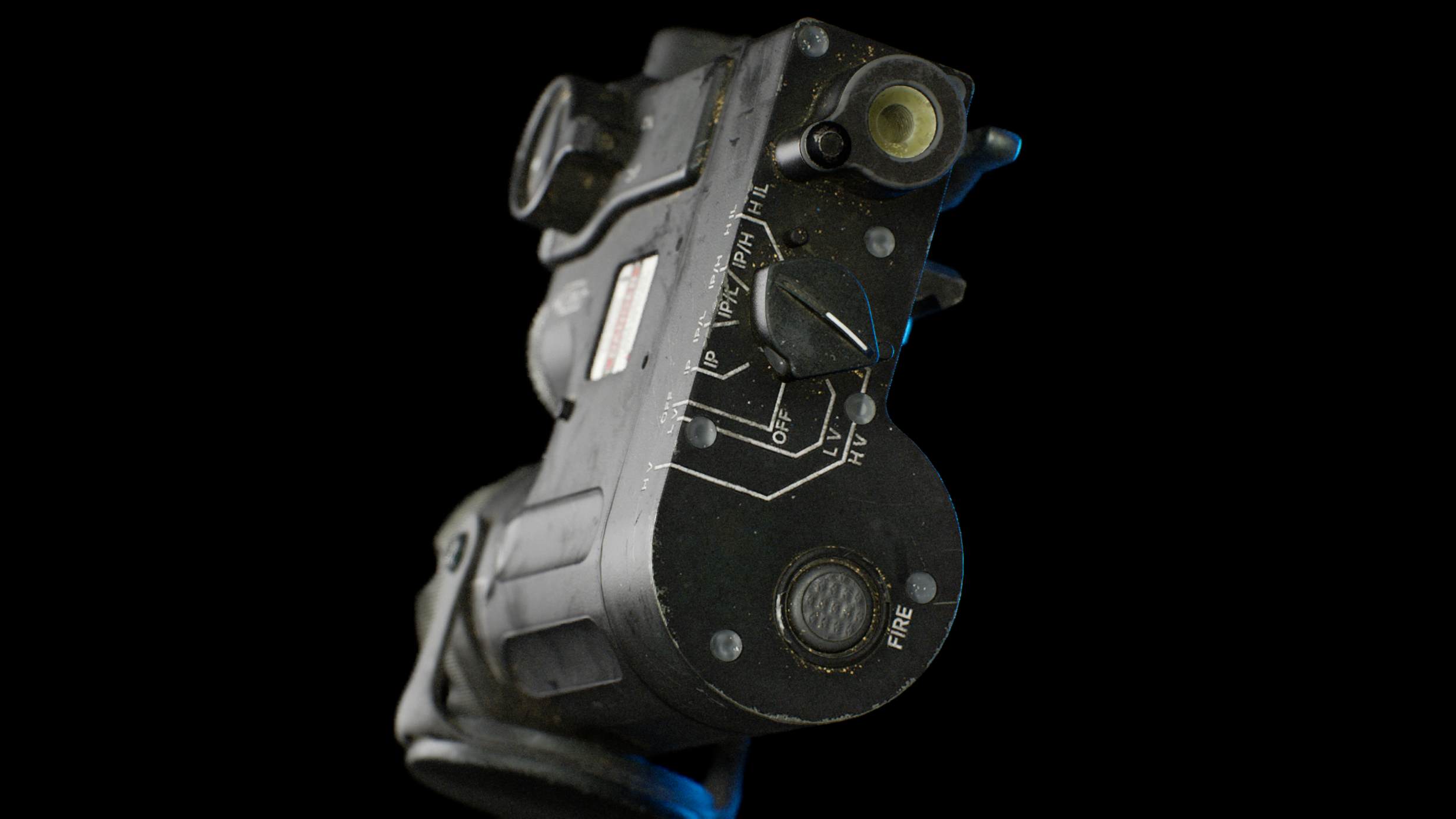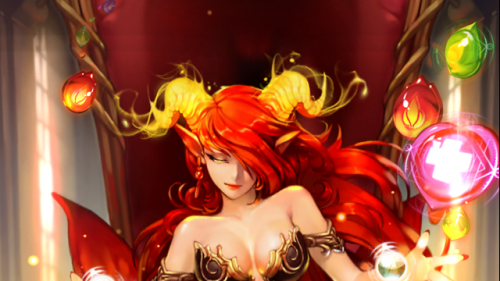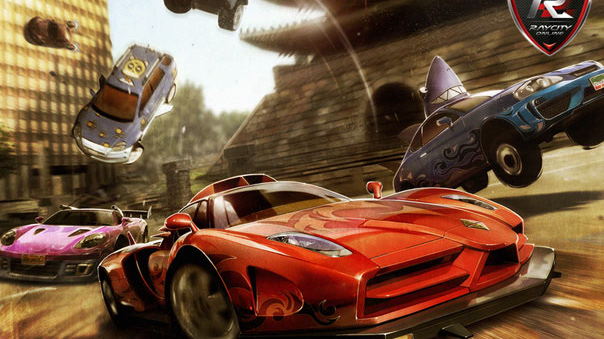Platform: Mobile (iOS / Android)
Engine: Unity
Genre: 3D Dress-up RPG
Serviced in South Korea
Critical Reception: Ranked at 3rd popular game in Google Play Store
Roles: UX Designer, Game Designer (Pre-production ~ live ops)
Team size: 15
I Love It for Kakao is...
a 3d dress-up RPG game that enables players to gather diverse fashion items through style duels, showcasing players' creativity within the game.
Overview
I Love it for Kakao is a 3D dress-up RPG where players, embodying princes or princesses from a fantasy world, venture to Earth to amass clothing and fashion items to rescue their realm. Along the journey, players assist individuals in need of fashion advice, earning fashion items or ingredients as rewards. These items can be customized and used to craft clothing. Additionally, players can personalize their avatars and engage in 'style duels' with others, participate in various multiplayer modes for avatar decoration, and exhibit their fashion creativity. Lastly, players have the option to create clubs to share their fashion sense with friends and fellow players in various scenarios.
Main Features
◦ Test your styling knowledge with an engaging dress-up puzzle
◦ Collect +6,000 fashion items and customize your avatar with them
◦ Share and express your creativity in fashion with your friends and other players
Summary of Responsibilities
• As the UX designer & senior game designer, I oversaw gameplay systems and content, working closely with the creative director and the art team.
• I designed intuitive game flow and visual hierarchy to enhance players' fun experiences.
• I collaborated with cross-functional teams to align on our game's vision and boost quality.
• I crafted the game's narrative structure, encompassing plot, characters, and player dialogue.
• I authored and maintained detailed game design documentation.
• I liaised with the publisher to address live-ops requirements and incorporated player feedback to improve gameplay.
• I designed intuitive game flow and visual hierarchy to enhance players' fun experiences.
• I collaborated with cross-functional teams to align on our game's vision and boost quality.
• I crafted the game's narrative structure, encompassing plot, characters, and player dialogue.
• I authored and maintained detailed game design documentation.
• I liaised with the publisher to address live-ops requirements and incorporated player feedback to improve gameplay.
Challenge 1: Creating social systems using multiplay modes & other systems
Since the core pillar of the game is fashion and style, we wanted to have spaces for our players to express their creativity and share their work. One of the cores of styling is creativity, and we found out that people want to show their creations more via social media and other outlets. Presenting their character or avatar to the public can satisfy players' needs for autonomy - intrinsic motivation. Therefore, I designed three multiplayer modes to provide all types of players have enough space for sharing their creations in the game. Additionally, we decided to add in-game messenger and club to create a safe environment for all players.
System diagram of 'I Love It! for Kakao' *Social-related features are displayed in red color.
1. Contest - Real-time Tournament
'Contest' is a synchronous multiplay mode in which eight players can compete with the best style corresponding to the daily subject that the system suggests.
'Contest' game flow
Information at-a-glance
The main screen of the contest mode is filled with preset avatars to give players visual information before the dress-up begins.
Dress code
In the dressing room, the 'Dress code' will guide players to have specific types of items; for instance, players need to wear sandals when they decorate for beaches. It also encourages players to collect more fashion items.
Single-elimination tournament
I chose the 'single-elimination tournament' mainly for the proper duration of each match since this mode happens in real-time.
Emoji system
I wanted players to communicate during the session in a safer environment. My solution was to use 'emoji' icons to display one's emotions and reactions. It could block inappropriate messages, cyberbulling, and other inappropriate contents successfully.
Player's pick
Players can pick the winner every single match, so even if they are eliminated earlier in the competition, they have something to do in the game.
2. Audition - World event
'Audition' is a world event that all players in the game can participate in every day. Players can join in the event with the female and male characters. The ranking will be calculated based on the character's costume to reward players who collected more outfits.
'Audition' game flow
World-scale event
Many players wanted to show their creativity to as many people as possible. That is why I designed this world-scale event that every player can join.
Female and male characters
One of our advanced features was that all players could have female and male characters compared to other dress-up games. However, the single play does not demand the use of both characters. So this 'audition' boosts players to have female and male characters.
3. Photo shoot - Asynchronous multiplay
'Photo shoot' is an asynchronous multiplay in which players can post the fashion photo shoot using preset poses, lights, texts, and background images. The theme of the photo shoot changes twice a week.
'Photo shoot' game flow
Like a fashion magazine cover
Some players do not want to compete with other players in real time. That's the starting point of developing an asynchronous multiplay mode. I got inspiration from the cover of the fashion magazine.
Provide presets
To make this game mode more approachable, I suggested the idea of giving players lots of preset materials to use. Consequently, we provided diverse presets: from poses to the texts, and players enjoyed using them.
Sliding pick mechanic
Players can evaluate many photos by using a sliding pick mechanic. It's a very intuitive and natural action on mobile devices. We also added a heart beating animation to emphasize the moment of selection.
Pyramid shaped exhibition
Players can evaluate eight images from others simultaneously, so we need to display all images at the result phase. However, we need to show higher-ranked photos bigger. Thus, we aligned all pictures in a pyramid shape.
4. Token as a meaningful reward
As I explained above, we have three different multiplay modes, and it was a challenge to make them all engaging and meaningful experiences for players. I suggested three types of tokens to buy various clothing parts to contrast the three modes. For instance, players need to collect 'audition tokens' to purchase necklaces, hair accessories, etc. Our clothing items in the game are already classified by their type, so it was not difficult to implement this division.
Token-items table
5. In-game Messenger
Our team implemented in-game messenger since it can handle and create more social interactions inside the game. Players can talk with other players without changing their screen to other messenger apps. Moreover, players can send and receive gifts to their friends, and this feature boosted the interaction between players.
Kakao friends
'Kakao talk' is a mobile messenger app that 93% of smartphone users use daily in South Korea, and our publisher was the 'Kakao games' corporation. Therefore, our players can invite their friends using the Kakao messenger into the game without privacy concerns.
Expand social network by reward
Players can receive rewards whenever they invite a certain number of their friends on the messenger. The prize encourages players to invite their 'real-world' friends into the game and helps them spend more time in a friendly social environment.
6. Club - In-game player community
Many players' communities are outside the game, from Facebook to social media. However, we wanted players to unite and create more relations within the game since we knew their engagement rate would rise if they had social connections. That's why we implemented the 'Club' system.
Club recommendation
The club can create frustration for the players who are not social gamers. Thus, we added a club recommendation feature to make them feel more comfortable.
Club Management
We wanted players to manage their club since it can make more direct social connections between players. There are two levels of membership, club master and club member. Club masters can accept new members when they get a request, and they also can kick problematic members.
Club activities - share & celebrate
Players can share good moments, like getting ranked 1 in the multiplay mode with the club members via the club menu. And other members can 'celebrate' those joyful moments. By celebrating together, their bonds can be strong, creating a positive loop of collecting more clothing and high engagement in gameplay.
Club points and rewards
All club members can collect points by sharing and celebrating exciting moments on the club menu. All club members can get a random item for free when the points accumulate and reach the maximum daily limit. It also boosts social activities and stimulates gameplay.
Challenge 2: Creating costume data for style battle
'Style' or 'Fashion' is hard to define in a word or one sentence, so the costume does. However, we need to find a way to implement these complex concepts into our game. We also need to create costume data for the style battle, which is an essential part of the game's core loop. For instance, how can we measure and quantify one player's costume with another? How can the player clear a level in a single play? So we did competitive research and also got colossal inspiration from K-pop.
1. Define the costume
I started with the definition of the word 'Fashion' from the Oxford languages. "Fashion is a popular trend, especially in styles of dress and ornament or manners of behavior." So I could get three keywords from it:
1. Fashion is something popular, meaning the grade of fashion follows public opinion first.
2. Fashion consists of dress and ornament, meaning we need clothing and all accessories: sunglasses, wristwatches, bangles, etc.
3. Fashion can be shown by manners of behavior. I thought that it could mean a suitable occasion for the clothing. For instance, we must follow the dress code when participating in a ceremony or party.
Moreover, I did competitive research on the game 'Love Nikki - dress up queen' to classify and define the attributes of the clothing. Finally, I could create all details and properties of clothing, including accessories.
Build from the scratch
Firstly, we defined what kinds of properties for costumes we'll use in the game. It needs noticeable property on style. So players can recognize a specific item as casual or formal, etc. Next, we need to define the clothing's visual elements individually. For instance, it can be a t-shirt, coat, or both. The last element is a costume tag which its visuals can figure out. Does the item have a ribbon or a gem ornament, and what kind of fabric or garment is used?
Costume categories & parts tag for the production
After I designed the basic structure, I also identified the costume from the production side's perspective. We need to classify what kinds of items our players will have eventually for the 3d performance obtimization. For instance, people can wear ten rings in the real world. But do we need to allow it in our game? After a lengthy discussion, we finalized all the items' structures, which helped us get a clear plan for the game.
One major accomplishment was our players could have female and male characters. In contrast, our competitors in the market usually have female characters only at that time. However, we could not create LGBTQ characters due to technical challenges and constraints. If I have the chance again, I will add LGBTQ characters to the game since I know there are no gender boundaries in the fashion world.
-
Style properties
Style is not easy to identify at first. However, we discovered four distinct common emotions when we look at our fashion styles. For instance, we do not wear 'casual' when we go to proper places. And we can say Mark Zuckerberg's style looks 'simple' in contrast to Lady Gaga's fancy style. So we settled on four spectrums of emotions at last.
Costume Tags
After designing the properties, we also wanted to verify the costume from an exact point of view. Consequently, I created a costume tag system to specify every visual element of the outfit—we used a tag system in the crafting system in the game; for instance, players needed to collect 'silk' materials to create a specific blouse made of 'silk.'
This example image shows how I set up the properties and tags. After we set up the properties and tags system, I worked on setting all the elements using our in-house development tool. 3d artists commit their work to the database, and then I can open up the 3d model and set properties and tags by its appearance. I nearly set up 6,000+ items in total. So it was a tremendous amount of work, but we could design various game modes using them.
Screenshots

Opening scene, NPC
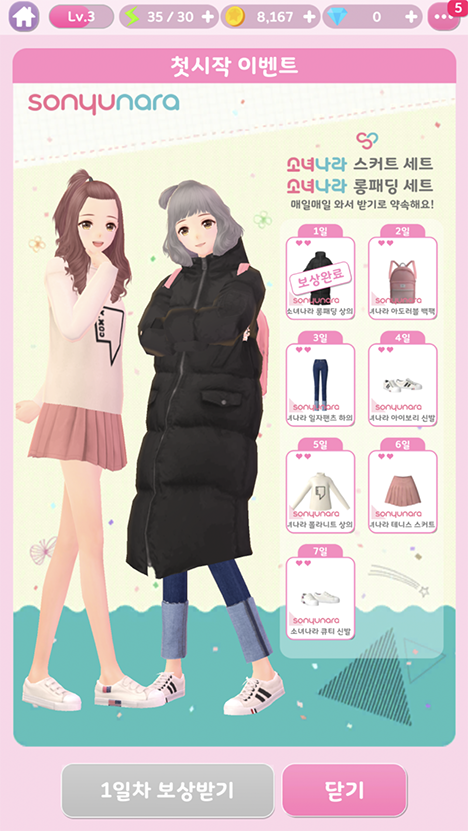
Collaboration with fashion retail shop
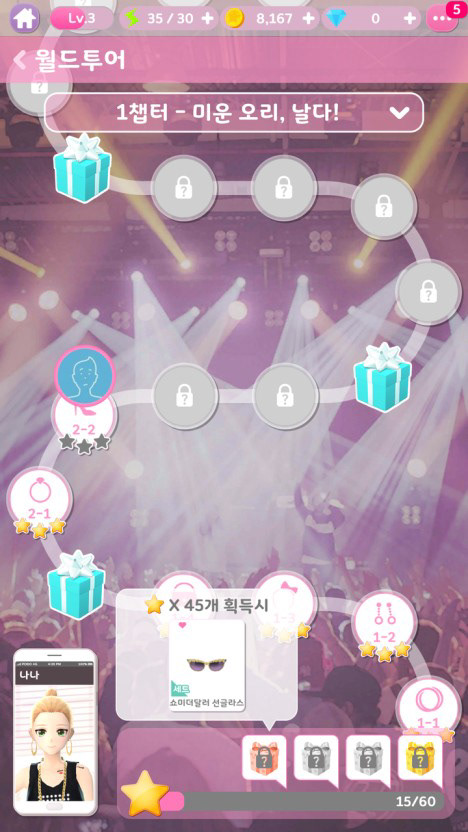
Map of single play

Customization
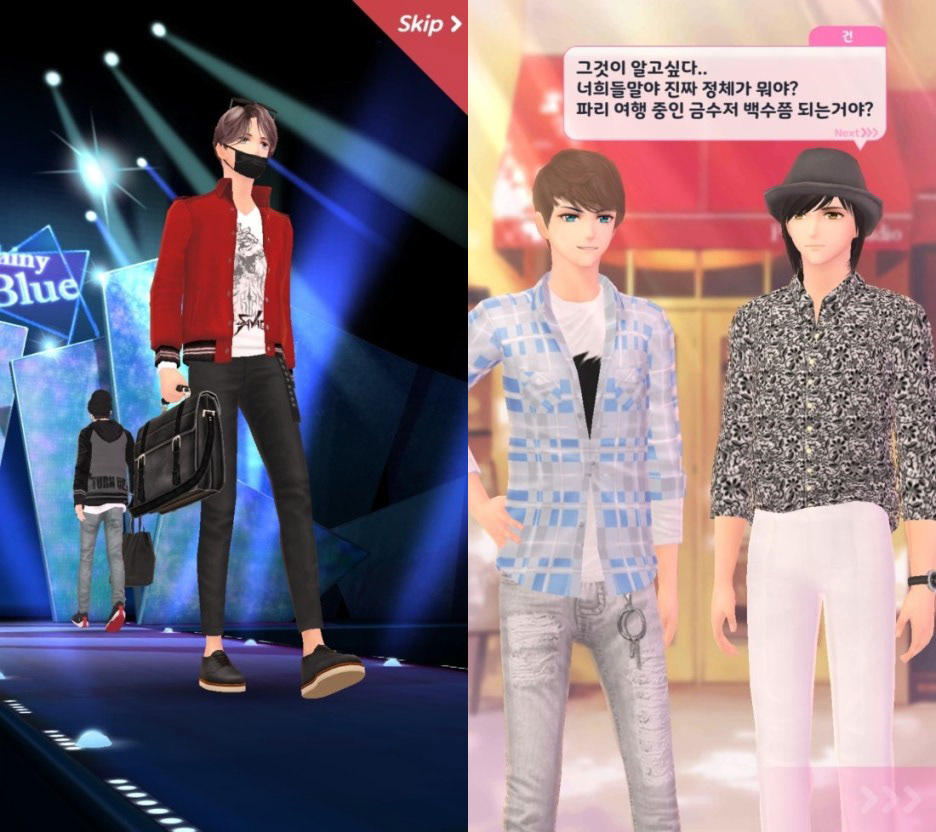
In-game screenshot
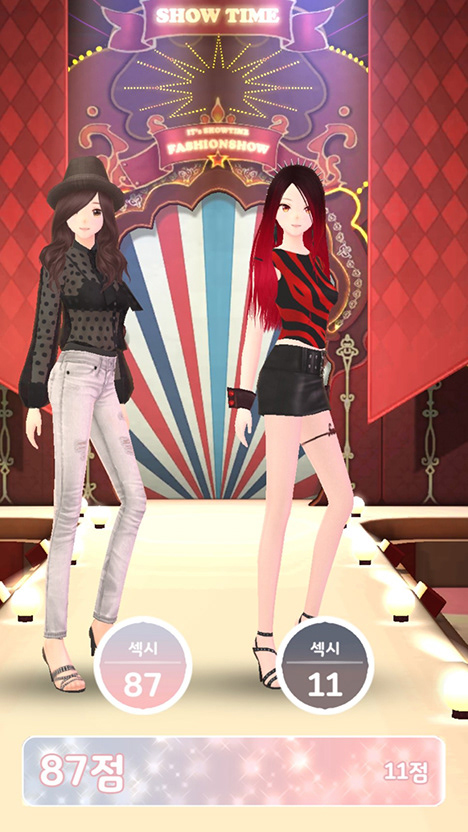
Single play score
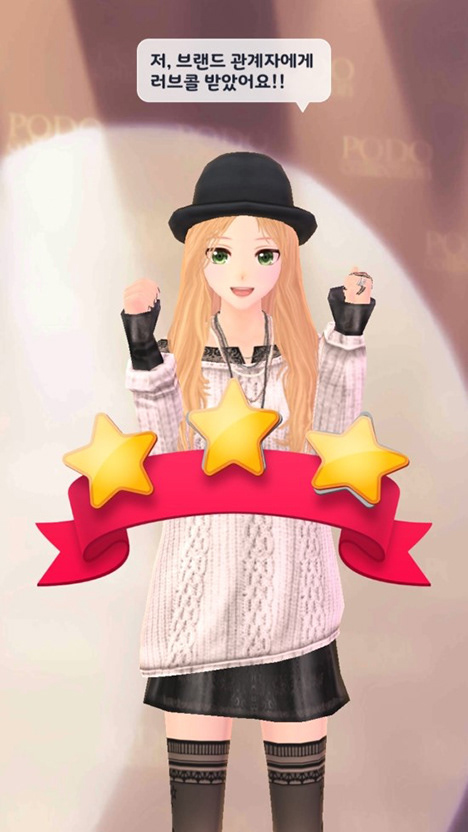
Single play result
